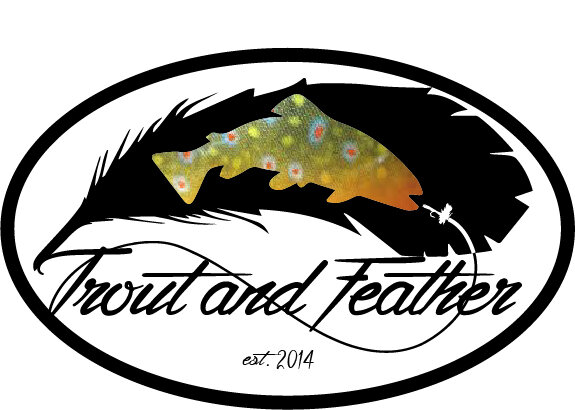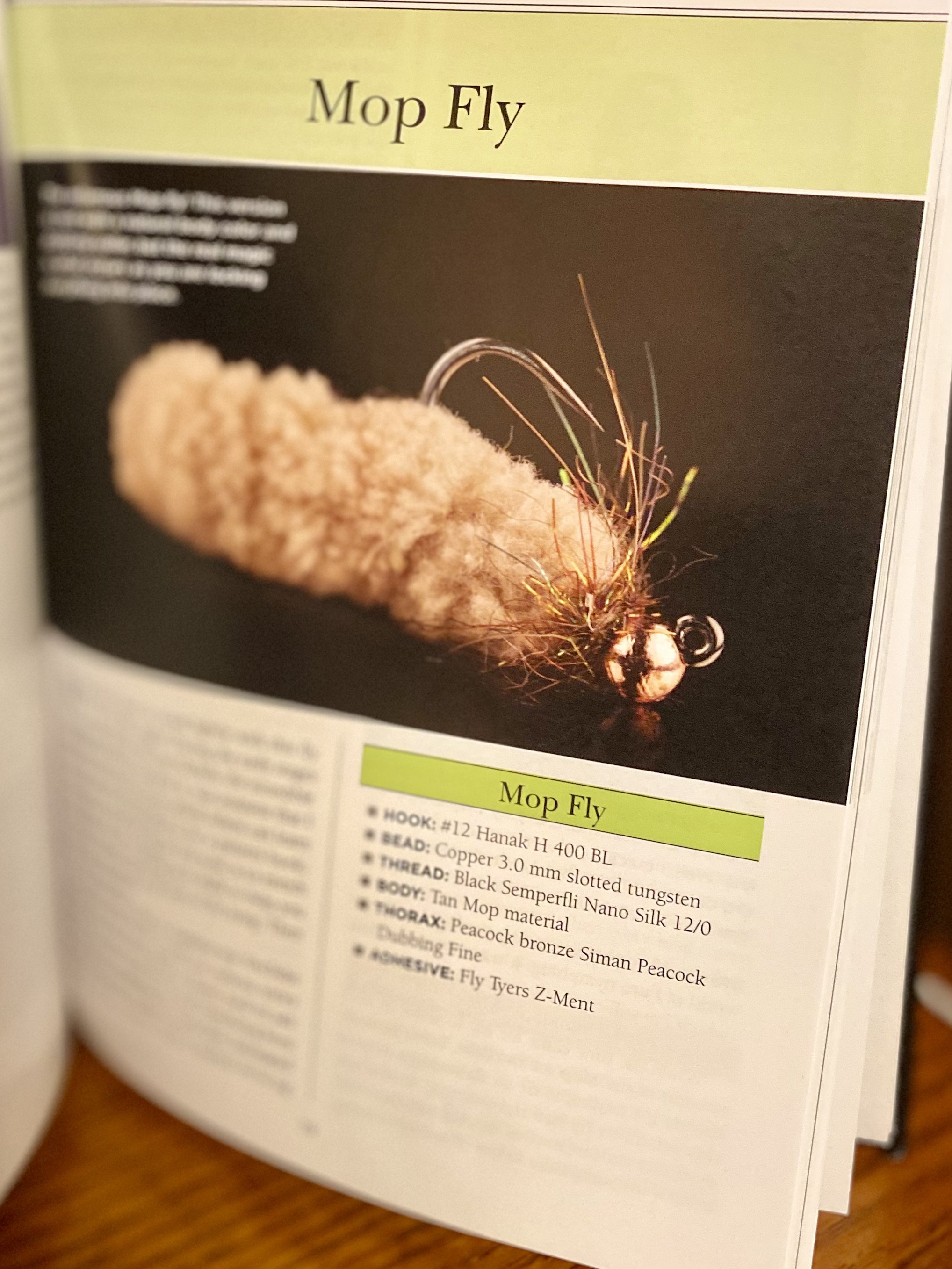Fly fishing is known for its connection to nature. It’s known for being relaxing on one hand and equally challenging on the other. It brings us together; everyone loves a free coffee at the local fly shop! And fly fishing is especially steeped in tradition, Fly Fisherman magazine always called it “The Quiet Sport.” Then along came the Mop fly. Can one fly really disrupt the entire sport of fly fishing?
The short answer is “No,” but it can create a speed bump, which is exactly what the Mop fly did. Even personally, this fly had an impact. In 2015, just after the fly started gaining a following, I recorded a Mop fly tying video (found here). Yet I didn’t publish the video until the next year. Why? I knew that releasing a Mop fly video would alter my YouTube channel. And it did.
As per the Google search engine, the Mop fly was invented by Jim Estes in the late 90’s. Yet similar versions of this fly have been fished for years prior. In my home state of Pennsylvania, popular chenille-based flies include the Green Weenie and Honey Bug. The Mop is like a 2.0 version of those, its thicker material held together with a multi-strand core. Sticking with that, where did fly tiers first find Mop fly tying material?
Examining the name, some early products featuring Mop fly material were, you guessed it, mops! At automotive repair stores, there were cleaning mitts that consisted of little mop “fingers,” perfect for spreading soap all over your vehicle. I found sets of “mop slippers,” marketed that you could wear them around the house to clean. Since the color combinations were perfect, I ordered some; you can imagine my surprise when I got home from work and found my wife Heather jokingly wearing the light pink ones around our kitchen!
To tie with that material, simply cut away the individual “fingers” from the base, then lash onto a hook. Simple enough, but why are Mop flies so effective? Since the material is dense, it drifts and falls through the water column like an open parachute; its path is erratic and unpredictable, something fish respond to. Don’t forget that it has tons of individual fibers, which means it may take longer to sink. If you tie your own flies, be sure to add tungsten beads to the hooks. Prefer to buy Mop flies? Get them at my favorite online fly shop: Mop Flies
Tying the Mop fly is simple! Start with a hook and bead, then lash Mop material to the shank. Dubbing is optional, though I prefer to “dress up” my Mop flies!
Mop Fly Recipe:
Hook: #12 jig hook
Bead: Silver or copper 3.8 mm tungsten slotted bead
Thread: Black 12/0 Semperfli Nano Silk
Adhesive: Super glue
Body: Mop material
Thorax: Black Peacock dubbing
When tying the Mop, go for durability! After lashing in some thread over the hook shank, lay a base of super glue, then set the Mop material in place. From there, wind thread through the Mop, securing it to the shank. Finish with some peacock dubbing between the bead and Mop, then brush super glue onto the thread before you whip finish. Now you’ve tied a durable pattern that will take fish time to tear apart!
My book, Fly Tying for Everyone, was the first to feature the Mop Fly! I am proud of that honor, especially knowing how many fish this fly has accounted for over the years. Into fly tying? Buy an autographed copy of my book: HERE
Favorite Colors
Now the toughest decision, what color Mop fly should you use? Favorite colors are based on the species I’m chasing, but these three are always in my fly box:
1. Chartreuse - The go-to color for many fly fishers, as it causes fish to react once it enters the water. Stocked trout (and bass) go crazy for chartreuse!
2. Tan - This muted color won’t spook many fish since it looks natural when drifting. Opt for tan, especially when targeting wild trout.
3. Pale Pink - If I’m chasing steelhead, I go for this shade, which tends to draw a reaction without scaring the steelhead from their lie.
Those colors cover many situations and species, but find which ones trigger a reaction from the fish you’re targeting. If I’m chasing bass on the fly, I love throwing black or olive Mop flies. Fly fishing in Iceland, I use dark brown, which represents caddisfly cases. Panfish seem to eat every color I try! The key is finding a color that you have confidence in, then fish away.
In some cases, it’s easy to believe that a certain color may represent an aquatic insect like a cranefly larva or cased caddis. Don’t overthink things, the Mop is a big meal that makes fish want to say, “Yes, please!”
Fishing Techniques
Fish the Mop fly on an indicator rig, Euro nymph setup, or high stick technique. Start first by dead-drifting the fly close to the stream bottom, mimicking food being carried downstream by the current. During the drift, occasionally jig your rod tip, which causes the fly to rise slightly in the water column. That movement draws a reaction from fish, since they don’t want their meal to escape. Allow the Mop to swing at the end of a drift, then recast.
Another favorite technique is to fish a two-fly rig, pairing the Mop with a smaller nymph. Encourage the Mop to nearly “slink” along the substrate, which also slows the drift of the second fly. Some fish will eat the Mop, but many choose the smaller dropper fly because it resembles their typical food. The Mop is acting like a weight to keep the second fly traveling at a slow speed. Email me for a copy of my two-nymph setup: tcammisa@gmail.com
Since the initial Mop fly craze, most fly fishers have come to appreciate the fly for one simple reason: It catches fish! My favorite story was the first time I used the Mop when fly fishing for steelhead. After casting my pale pink fly in slow-moving water, two steelhead charged the fly; I nearly broke the fish off because I was in shock at their reaction! As the saying goes, “Can’t stop the Mop!”
The Mop fly is not for everyone. If this fly is not for you, I’d love to know why in the comment below. Love the Mop? Be sure to share your favorite colors and how you fish it. Thanks!
When fishing a fast run, make sure your fly is getting to the fish. In this case, after fishing through a fast section with no eats, I went back through with a heavy nymph and caught this gorgeous rainbow trout. With a heavy tungsten bead, the Mop fly is perfect for this situation, as it gets down in a hurry.
BY TIM CAMMISA
I share my passion for fly fishing and fly tying through personal experiences and expert insights. As a seasoned fly fishing guide turned content creator, my YouTube channel boasts over 5 million views, offering viewers a wealth of knowledge and inspiration. While I cherish moments chasing trout in Pennsylvania with my family, I also lead fly fishing expeditions to the captivating landscapes of Iceland and Alaska. Additionally, I authored the acclaimed book Fly Tying for Everyone, aiming to empower fellow enthusiasts to tie superior flies, elevate their angling game, and savor unforgettable moments on the water.
If you click on links we provide, we may receive compensation.





